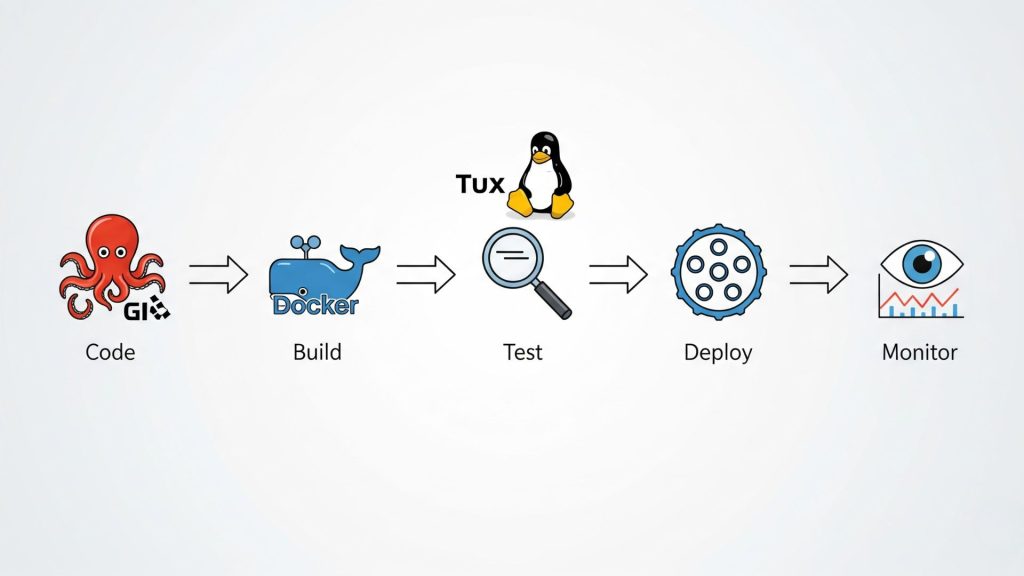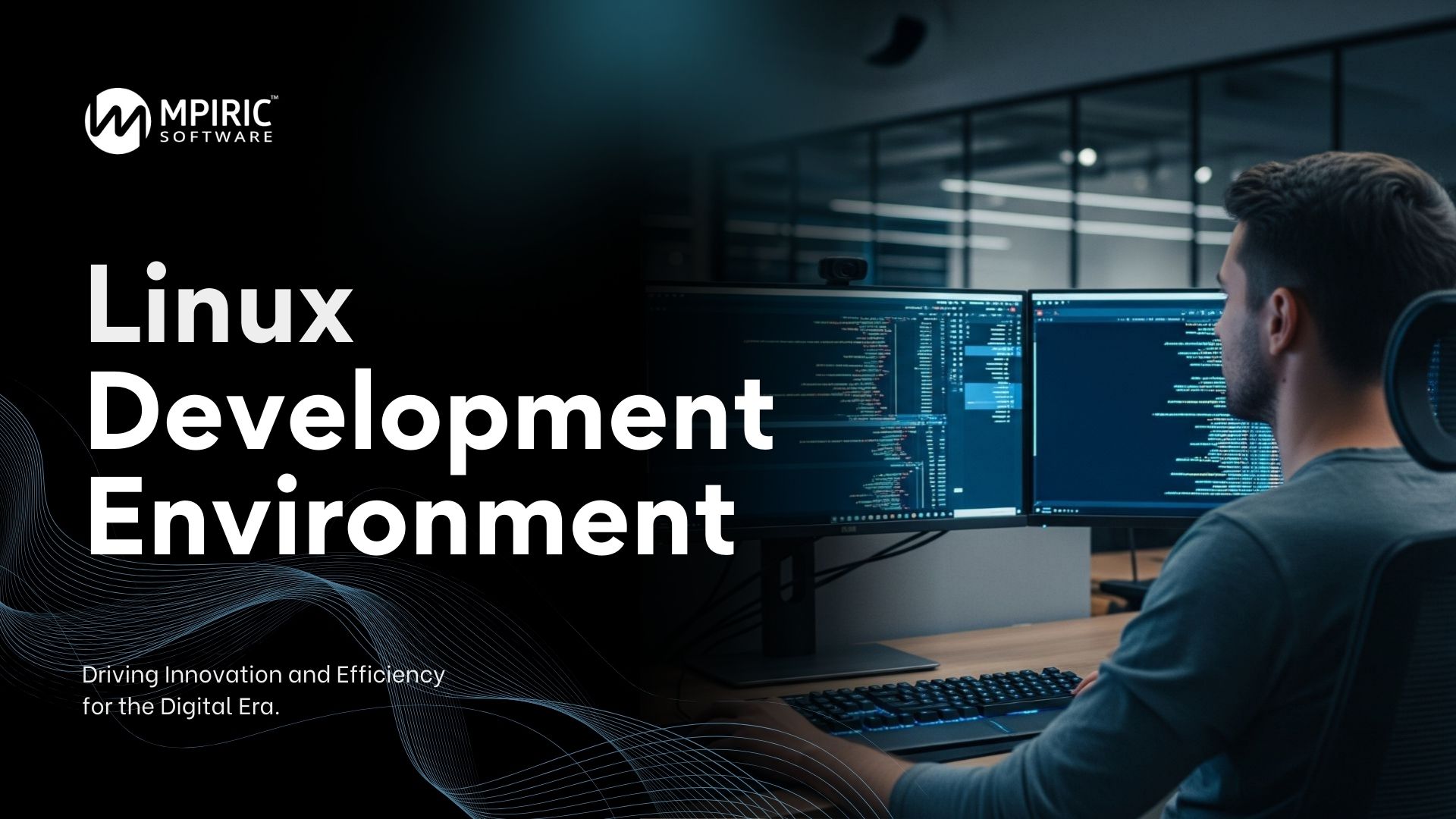In the tech world today, where competition is fierce, the tools your development teams use are more than just an IT decision; they’re a big part of your strategy. The operating system you choose and the ecosystem that goes with it have a direct effect on how secure the system is, how much it costs to own, and how productive developers are. There are good and bad things about each platform, but more and more of the best companies are using a Linux Development Environment to build, deploy, and manage their most important apps. A strong mix of low costs, high performance, and unmatched flexibility is pushing this change in strategy. This article will talk about the best business reasons to use a Linux Development Environment and why it’s a good choice for new ideas in today’s world.
Unmatched Cost-Effectiveness and Open-Source Advantage
One of the best reasons for businesses to switch is that it will save them a lot of money.
- No Licensing Fees: Most Linux distributions are free to install and use. This is different from proprietary operating systems, which charge a lot of money for each seat. This gets rid of a big capital expense right away, which frees up resources for important development projects.
- A Lot of Free Tools: Linux is open source, and so is the huge software ecosystem that goes with it. A Linux Development Environment gives developers free access to a lot of tools, like Git for version control, GCC for powerful compilers, Docker for containerization, Kubernetes for orchestration, and many more libraries and frameworks. This lowers the Total Cost of Ownership (TCO) for your software development lifecycle by a lot.
More stable, better performance, and safer
Linux is more than just a way to save money; it also gives enterprise-grade apps a strong and reliable base. The better your Linux Development Environment works, the faster your development cycles will be.
Excellent Performance and Efficiency
Linux is known for having a lightweight architecture and being able to manage system resources like CPU and memory well. For developers, this means that compiling code will take less time, switching between heavy programs like IDEs and virtual machines will be easier, and the workflow will be more responsive overall.
Legendary uptime and stability
The Linux kernel is the heart of the internet, and most of the world’s web servers run on it. Because it is so stable and reliable, people trust it for important tasks. With a stable Linux Development Environment, you won’t have to spend as much time fixing system crashes and can spend more time writing useful code.
Strong Security Model
All businesses need to be safe. Linux was designed from the ground up to be a multi-user system with a detailed file permission model. Hackers and malware have a hard time getting in because of this. The open-source community is always looking for security holes, so they are often found and fixed much faster than in systems that are owned by a company.

Freedom and flexibility that no other platform can match
When developers are happy and have the tools they need to do their jobs, they get more done. Linux is the best operating system for engineers because it lets them customize and control their work flow exactly how they want it.
The Command Line’s Strength
One of the best things about a Linux Development Environment is the Command Line Interface (CLI). It lets developers automate tasks they do all the time, manage complicated workflows with simple scripts, and interact with their systems with a level of accuracy that graphical interfaces can’t always match.
The Most Personalization
Developers can build their perfect environment from the ground up by picking a lightweight window manager and choosing from hundreds of powerful open-source tools. We at Mpiric Software think that giving developers this much freedom lets them be more creative and productive because they don’t have to deal with the restrictions of a locked-down, proprietary system.
Works great with today’s development processes
The fact that Linux is the main language of the modern cloud and DevOps world is probably the most important strategic advantage.
Linux is the basis for containerization (Docker), orchestration (Kubernetes), and CI/CD pipelines. When you use a Linux Development Environment, your team works in an environment that is similar to your production servers. This fixes the problem of “it works on my machine.” Many expert companies, like Mpiric Software, build their whole DevOps pipeline on a Linux Development Environment because it is so easy to integrate. If your business is new to this, hiring professional Linux development services can help you get things done faster and make sure that best practices are followed from the start.

Frequently Asked Questions (FAQ)
1. Is it hard for developers who work on Windows and macOS to learn how to use a Linux Development Environment?
Learning it takes time, especially the command line, but the long-term benefits in terms of productivity are huge. It’s easier than ever to switch to a new operating system because modern distributions like Ubuntu have graphical interfaces that are very easy to use.
2. What are the best Linux distributions for programming?
Ubuntu, Fedora, Debian, and Arch Linux are some of the most popular Linux distributions. There are good and bad things about each one. A lot of people recommend Ubuntu for beginners because it’s simple to use and has a lot of help from the community.
3. How does Linux help business-level apps?
Linux has great built-in support for almost all of the most popular programming languages, databases (like PostgreSQL, MySQL, and MongoDB), web servers (like Apache and Nginx), and other business-level software.
4. Can we get help from a professional with our Linux setup?
Yes. Two companies that offer support contracts for businesses are Red Hat and SUSE. Many IT consulting firms also offer help with setting up a custom Linux Development Environment.
Conclusion
Moving to a Linux development environment is not only a technical change, but also a smart business move that saves money and boosts performance, security, and developer productivity. It makes sure that your development team knows how to use the technologies that power the modern cloud. This puts your business in a good position to come up with new ideas in the future. Mpiric Software’s experts can confirm that making the switch is a long-term investment in flexibility and efficiency. If you want your business to stay ahead of the curve, you need to build on a Linux base. You can do this in-house or hire expert Linux development services.


